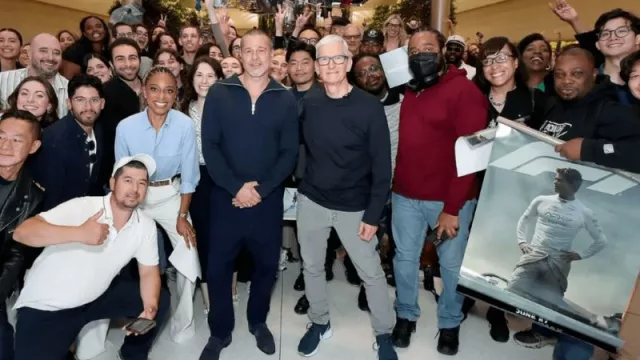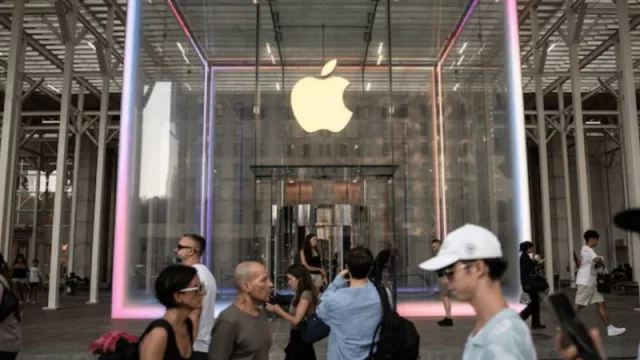The Great Shift:
Decades ago, Miami was mainly known as a frivolous paradise, a refuge for the dispossessed, lovers of excess, and those seeking quick fortunes. However, according to Stein, Miami's transformation is not due to an evolution of the city itself but to a profound change in the country as a whole. The United States has become a tax haven, free from regulations, where low-grade celebrities dominate the scene. And it is in this context that Miami has emerged as the most important city, embracing this new reality and offering a refuge of freedom for those seeking to build their own path.
The Turning Point for Miami:
It was the COVID-19 pandemic that triggered what is known as the Miami Movement. During the crisis, physical disconnection and widespread adoption of remote work allowed people to break free from geographic constraints and explore new opportunities. In the 12 months following July 2020, over 220,890 Americans moved to Florida, turning Miami into the epicenter of an unprecedented migration.
But this migration is not just about people; it's also about money. Miami has experienced a boom in capital migration, attracting investors and magnates from across the country. Examples such as billionaire Carl Icahn relocating his office from New York and the multimillion-dollar sales by the Jills Zeder Group in 2020 demonstrate the city's economic prowess.
What makes Miami so special?
It's a cocktail of factors that combine a favorable business environment, an optimistic mindset, and a progressive attitude. Miami has become the new technological mecca, where innovators and entrepreneurs find a vibrant ecosystem and a supportive community to pursue their dreams. With a spirit of emulation and a mindset of success, the city has become the Silicon Valley of 1999, attracting those aspiring to make a difference in the tech industry.
Additionally, Miami has managed to strike a balance between economic development and environmental preservation. Despite alarming projections about climate change and rising sea levels, the city has proactively prepared to face these challenges.
In summary:
Miami has undergone an extraordinary transformation in recent years, evolving from a haven of excess to a center of innovation, entrepreneurship, and diversity. The combination of a favorable business environment, a progressive attitude, and a vibrant cultural environment has attracted people and capital from across the country, solidifying Miami as the most important city in the United States today. As the city faces challenges and works towards problem-solving, its future appears promising and full of possibilities.
What's next for Miami?
With resilient infrastructure projects such as the construction of levees and improved drainage systems, Miami is prepared to withstand the impacts of climate change. Additionally, the city is investing in renewable energy and promoting sustainable practices to reduce its environmental footprint.
What sets Miami apart from all other cities today?
Another key factor in Miami's success is its cultural diversity and inclusive spirit. The city has attracted a large number of immigrants and has developed a vibrant artistic and cultural scene. The blend of cultures, languages, and traditions has created a diverse and ever-evolving community, driving creativity and innovation. MIAMI is synonymous with the unique ANGLOLATINA culture, a distinctive theme that even the Miami media barely delve into its depth, but perhaps in 10 or 20 years, it will give Miami the positioning as the new Ellis Island of the world.
While cities around the world try to become more closed and cling to their past, Miami continues to grow by embracing the present and generating a new culture. That is what makes it unique today, both in the Western and Eastern contexts. Perhaps only Dubai is somewhat similar, but with much less global inclusion across all power strata.
Furthermore, Miami offers an exceptional quality of life. With its beautiful beaches, year-round warm climate, and a wide range of outdoor activities, the city attracts those seeking an active and healthy lifestyle. Additionally, Miami's culinary scene has experienced a rebirth, with a variety of world-class restaurants offering a fusion of international flavors. The real estate market development is also comparable only to Dubai (United Arab Emirates). The revitalization of areas and spaces in the city pursues a long-term policy that is very different from the rest of the Americas.
However, despite its rapid growth and success, Miami also faces challenges. Economic inequality and lack of affordable housing are persistent problems that the city must address. Moreover, traffic congestion and infrastructure need to anticipate expansion limits and the diversion to other satellite cities. Many workers need to have two jobs to make ends meet, and long-distance transportation is costly.
Important improvements present great possibilities to enhance the quality of life and the Miami experience. If Miami wants to continue growing as a friendly city, it must include schemes where human interaction and personal attention are available in the tourism circuit. It should also promote a culture of hospitable and friendly service from all residents to visitors. The event agenda and ticket purchasing options should be made simpler and have more stands distributed throughout the city. Mass transportation is clearly a path that is well underway but needs to be further developed.
Miami's future holds tremendous potential as it addresses these challenges and continues to build on its strengths. With its resilience, innovation, and inclusive spirit, Miami has become a model for cities aspiring to create a thriving and diverse community. As it evolves and adapts, Miami is poised to shape not only its own future but also the future of the United States and beyond.












Tu opinión enriquece este artículo: